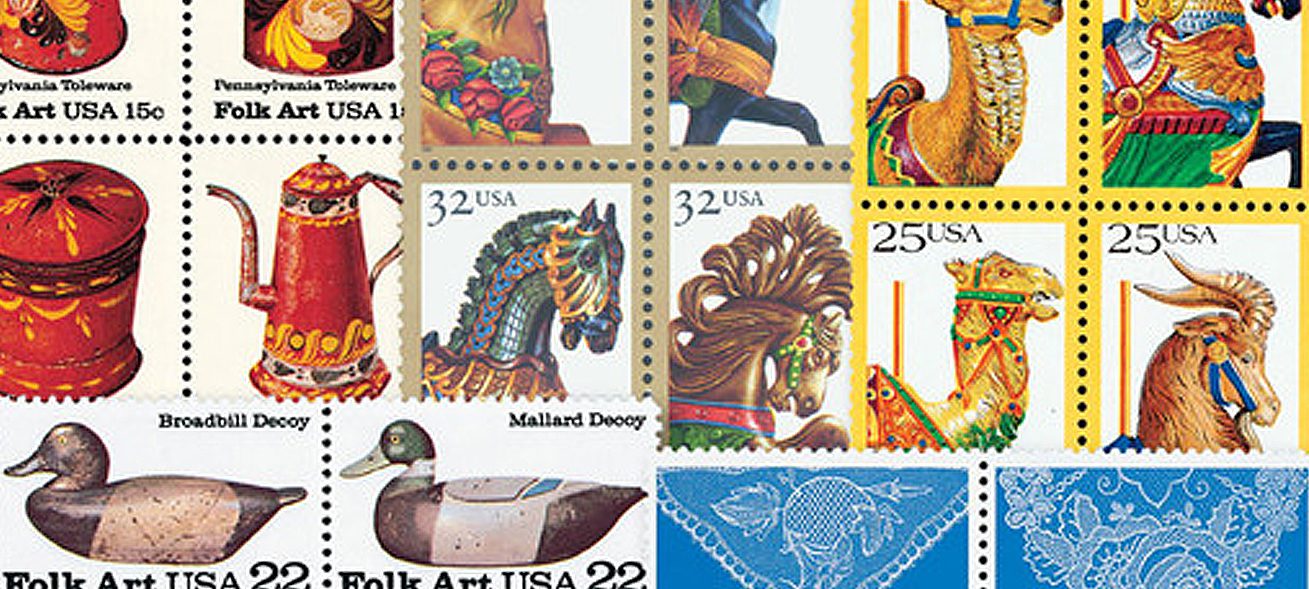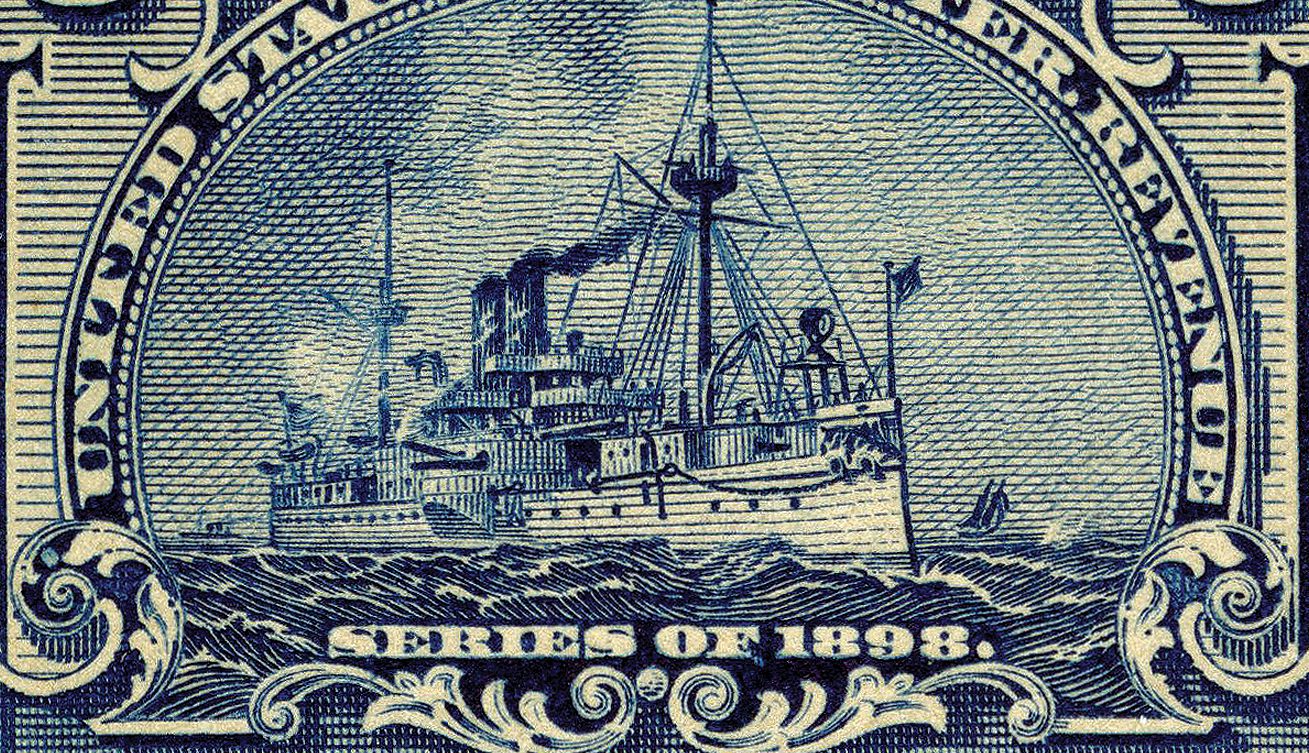American Folk Art Series
On April 13, 1977, the USPS issued the first stamps in the American Folk Art Series. The Folk Art Series honored important and lesser-known items in American art and culture.

On April 13, 1977, the USPS issued the first stamps in the American Folk Art Series. The Folk Art Series honored important and lesser-known items in American art and culture.

On April 6, 1999, the USPS issued the first stamp sheet in its 12-year Nature of America series. This popular series featured the first US self-adhesive sheets designed as one large scene.

On April 4, 1925, the US Post Office issued the first three stamps in a multi-year series honoring important events and people from the American Revolution. The stamps were issued for the sesquicentennial (150th) anniversary of the Revolution.

On February 27, 1979, the USPS issued the first stamp in the Literary Arts Series honoring author John Steinbeck. The series has continued for 45 years, honoring 35 writers from a variety of backgrounds.

On February 22, 1864, some of the first Sanitary Fair stamps were issued. These stamps raised millions of dollars in funds and supplies for the Civil War.

On February 15, 1898, the USS Maine mysteriously exploded in Havana Harbor, leading the US to declare war on Spain two months later. Special Revenue stamps depicting the Maine were produced to fund the Spanish-American War and the event had a significant impact on US postage stamps.

On January 28, 2013, the USPS issued the first stamp in its Global Forever Series. These stamps were created to simplify sending international mail.

On November 18, 1902, the US Post Office issued the first stamp in the Series of 1902-03. Known as the Second Bureau Issue, it was the first series completely designed by the Bureau of Engraving and Printing and is recognized for its ornately detailed designs.

On November 16, 1908, the first stamp in the Washington-Franklin Series was issued. A series that was meant to simplify postage, it resulted in 220 major and 99 minor stamp varieties over 13 years.